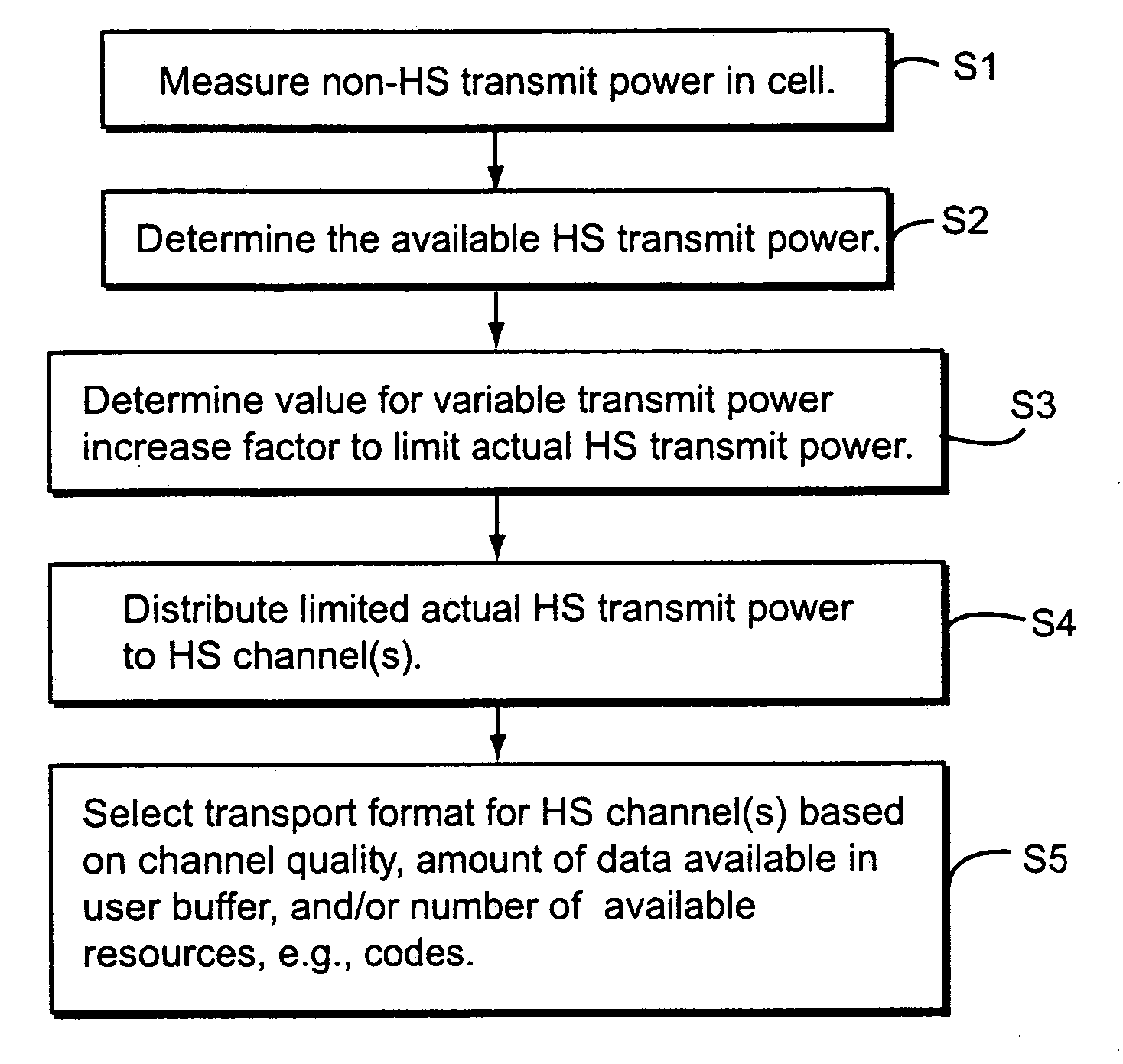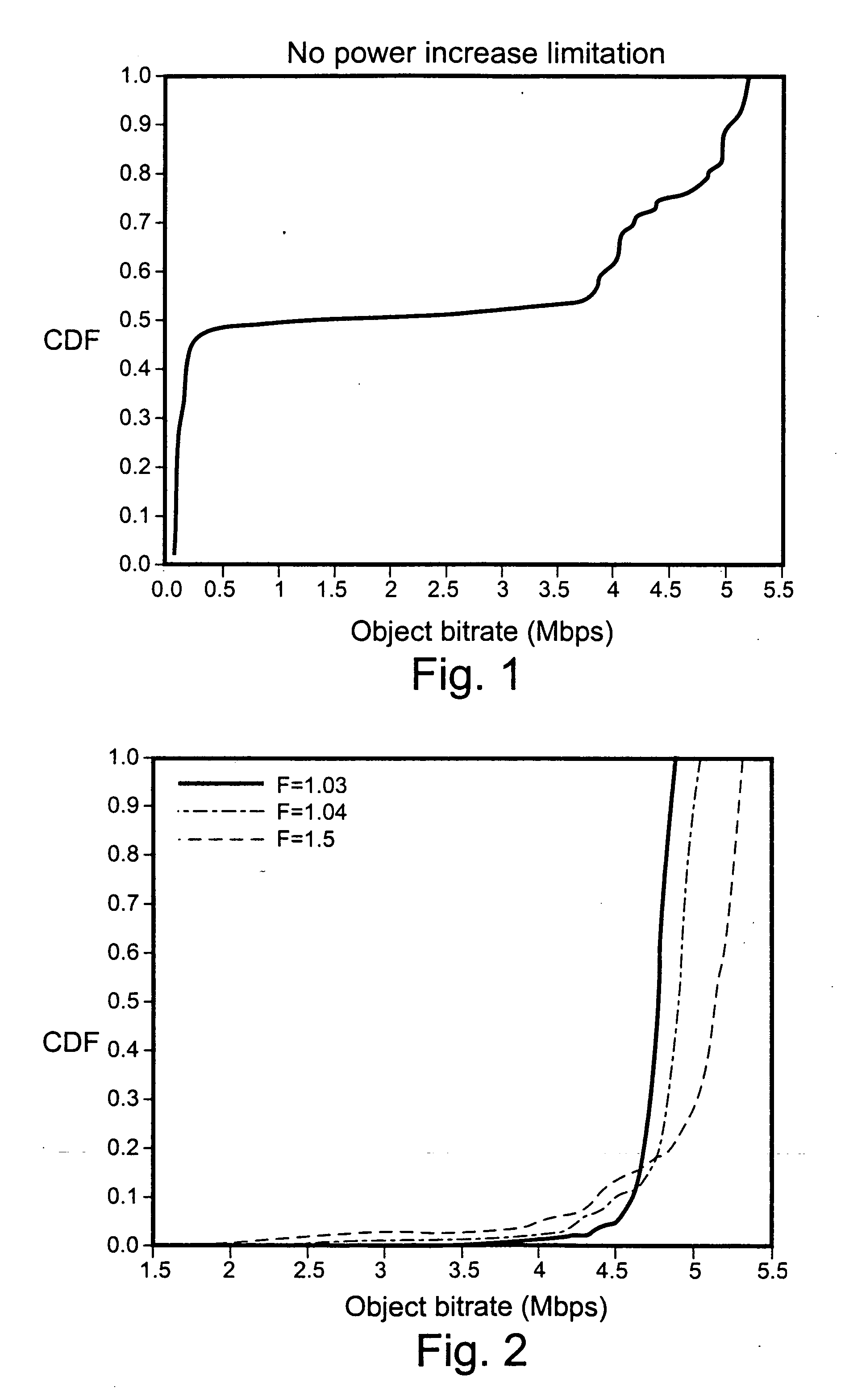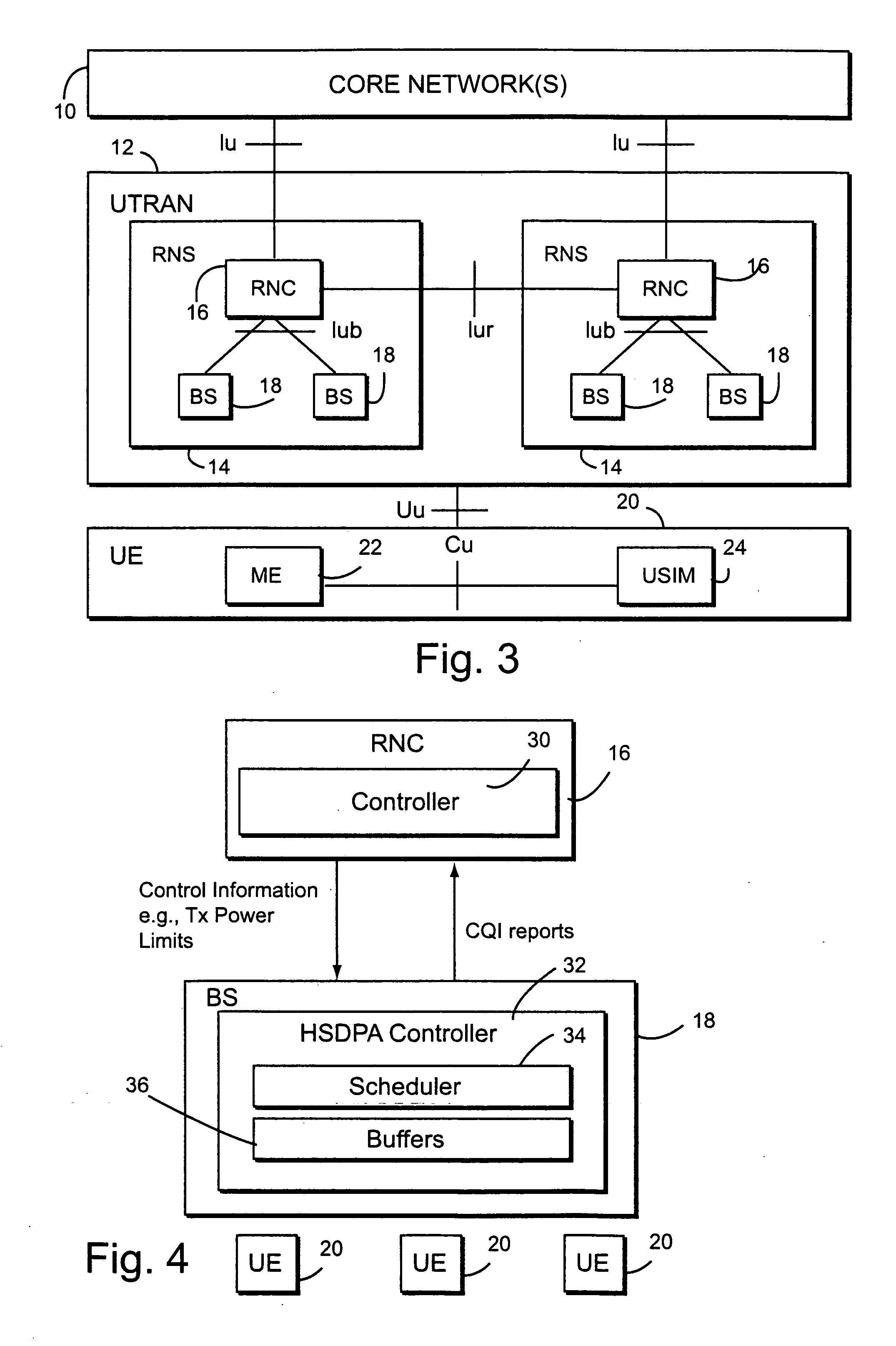High speed shared radio channel transmit power control
a radio channel and high-speed technology, applied in power management, wireless commuication services, polarisation/directional diversity, etc., can solve the problems of inability to accurately estimate, excessive interference to other users in the system, and inability to provide overall system capacity or service to non-hsdpa ues. , to achieve the effect of improving throughput, latency, and spectral efficiency
- Summary
- Abstract
- Description
- Claims
- Application Information
AI Technical Summary
Benefits of technology
Problems solved by technology
Method used
Image
Examples
Embodiment Construction
[0025] The following description sets forth specific details, such as particular embodiments, procedures, techniques, etc., for purposes of explanation and not limitation. But it will be appreciated by one skilled in the art that other embodiments may be employed apart from these specific details. For example, although the following description is facilitated using a non-limiting example to downlink high speed shared channels in a 3G environment, the present invention may be employed for uplink data transmissions as well and in any type of radio communications system that would benefit from the described technology.
[0026] In some instances, detailed descriptions of well-known methods, interfaces, circuits, and signaling are omitted so as not obscure the description with unnecessary detail. Moreover, individual blocks are shown in some of the figures. Those skilled in the art will appreciate that the functions of those blocks may be implemented using individual hardware circuits, us...
PUM
 Login to View More
Login to View More Abstract
Description
Claims
Application Information
 Login to View More
Login to View More - R&D
- Intellectual Property
- Life Sciences
- Materials
- Tech Scout
- Unparalleled Data Quality
- Higher Quality Content
- 60% Fewer Hallucinations
Browse by: Latest US Patents, China's latest patents, Technical Efficacy Thesaurus, Application Domain, Technology Topic, Popular Technical Reports.
© 2025 PatSnap. All rights reserved.Legal|Privacy policy|Modern Slavery Act Transparency Statement|Sitemap|About US| Contact US: help@patsnap.com



